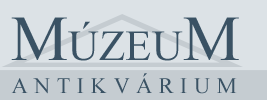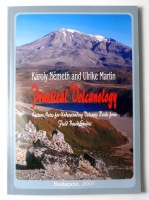categories
- Traffic and Vehicles Catalogue
- socreal.catalog
- Advertisement Catalogue
- Photo Catalogue
- Chinese and Japanese Catalogue
- New Holy Card Catalogue II.
- 12 interesting old books
 Books
Books
 Bibliophil
Bibliophil
 Antiques
Antiques
 Engraving
Engraving
 Maps
Maps
 Photos
Photos
 Antique Papers, Small Prints
Antique Papers, Small Prints
 Posters
Posters
- Circus
- Modern Graphics
- Socialist Realism
- NER Propaganda
- Others
cart
Cart is empty
You've not logged in
Németh Károly - Martin, Ulrike : Practical volcanology - Lecture notes for understanding volcanic rocks from field based studies
- description
- additional information
SVolcanic rocks are important in compiling geological records because of their characteristic chemistry, relatively fast accumulation and great variety; however, recognizable facies diversity may be useful for reconstructing not only the volcanic processes but also the eruptive environment where the volcanism take place. Volcanic rocks that are significantly fragmented are important from a stratigraphic point of view and they can be used to study palaeoenvironments where these volcanic deposits formed. The increasing importance of fragmental volcanic rocks in geological research is clearly demonstrated by the increasing number of publications that have appeared over recent decades dealing with volcaniclastic deposits and rocks. Different volcanological schools and associated textbooks have been published since the 1980s. Among the many that have become available four are of particular significance These are Fisher and Schmincke(1984): Pyroclastic Rocks; CAS and WRIGHT (1987) Volcanic Successions; MCPHIE et al. (1993) Volcanic Textures; and SIGURDSSON et al (2000) Encyclopedia of Volcanoes. The aforementioned are among the many textbooks that are widely accepted and used in volcanology courses at different levels. The volume Practical Volcanology, as a textbook, does not intend to substitute any of the above books; rather, it tries to deal with volcanic geology from a slightly different aspect from those already cited. Practical Volcanology is a direct result of a series of short courses offered for first time in 2001 at the Geological Institute of Hungary, Budapest, primarily for geologists working in ancient volcanic terrains, and their main aim is general mapping. In addition, these short courses also intended to draw the attention of undergraduate students, postgraduates and research students who came across volcanic rocks during their research. The basic idea of Practical Volcanology is included in a study guide and lecture notes which could be used as a self-standing guide for interpreting volcanic processes and the resulting deposits and rocks. To take full advantage of this book a preliminary geological background is necessary for the user, especially in the field of classic sedimentology, petrology and geochemistry. However, a limited background of geological knowledge would enough to get a basic idea of field-based volcanology in its simplest aspects. The book's main aim is to introduce basic field volcanology research from a theoretical point of view right through very practical elements. The basic philosophy of the book is that, especially in ancient terrains, the volcanologist's basic data is found through fieldwork, and they are looking for volcanic rocks, especially fragmented ones. This book intends to demonstrate the link between the field subject, a volcanic rock and the volcanic process that may have formed that rock. Such textbooks or study guides are relatively rare these days and often they are too detailed or complicated for undergraduate students or interested amateurs. This book consists of 8 chapters. Each chapter is fully referenced in order to give a very detailed guide to any user and it clear where the individual citaitons/statements come from. This allows the user to go deeper into the scientific problems such processes, deposits, or the relevant terminology itself. Each chapter is accompanied with figures widely used and referred to in the international literature and there are full colour plates of textures, volcanic activity and the 3D architecture of volcanic deposits. The figures and colour plates are fully explained and referenced. In addition, each chapter has a locality map allowing the user to identify the site locations for future references. At the end of the book there is a detailed glossary along with a collection of terms from widely accepted textbooks, articles, and web resources. The book also contains a detailed index for quick search through the chapters for key volcanological terms. The 8 chapters set a logical path from an introduction, a key of terminological issues right through to different volcanic processes. The first chapter deals with a short summary and referenced description of major volcanic terminological systems. This chapter also gives a detailed insight of the usage of different terminologies and their potential for futureresearch documentation. The second chapter is a detailed summary of active volcanism and its relationship to volcanic deposits. This chapter intends to make clear the connection between active volcanism and the volcanic rocks that most mapping geologists deal with in the field. The third chapter focuses on fragmented volcanic rocks. Beside its classification scheme and a presentation of the common features of fragmented volcanic rocks this chapter provides a clear guide about the information which can be obtained from fragmented volcanic deposits and rocks. This chapter also gives indication of the limitation the information with respect to its use for inferring volcanic processes and eruptive environments. The fourth chapter gives an introduction to volcanic facies analysis which one of the main goals of studying volcanic rocks in the field. Volcanic facies analysis is the basic tool for broad making interpretations and can be connected to palaeoenvironmental reconstructions. The fifth and sixth chapters concentrate on summarising volcanic processes and the resulting volcanic deposits and rocks which are associated with the two major types of volcanism on Earth: i.e. monogenetic and polygenetic volcanism. In these two chapters not only field examples are given but also a large collection of young deposits and volcanic processes are examined to demonstrate clearly the connection between volcanic processes and the resulting deposits and rocks. The seventh chapter deals with processes which act on volcanic terrains and which can significantly modify the original primary volcanic landforms. Also in this chapter a basic concept - derived from those few studies dealing with the topic - of the erosion of volcanic terrains is introduced. The eighth chapter gives a concise summary of the potentially most widespread, but less known type of volcanism which occurs in subaqueous environments. Probably in ancient terrains the majority of volcanic rocks represent deposits that may have formed in some sort of subaqueous environment. In addition this type of volcanism has the potential to generate volcanic deposits that can host valuable ore minerals. The book is based on the expertise of two authors gathered over the past 15 years of their work in the field of volcanic geology. The authors have primarily used their own research data to demonstrate key features but where useful these have been collated with other field information from other researchers. The majority of the field and textual data has been provided by the authors. The figure collection is based on published and usually well-accepted research papers or textbooks in order to facilitate the user's ability to connect their own work to individual researchers and their publications. Practical Volcanology is a study guide which it is hoped will provide a good basis for developing short courses.











 Telefon:
Telefon: E-mail:
E-mail:







